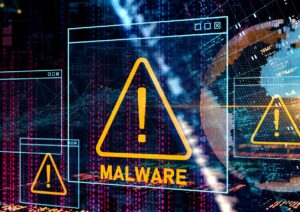Imagine this: You’re sitting at your work, drinking coffee, and all of a sudden your computer goes crazy. Files disappear, pop-ups show up, and fear sets in. Cloud vs Local Backup. What is malware forensics? That’s a good question. Let’s take it apart, bit by byte.

First, think of malware forensics as digital detective work. Some days it feels like it’s all trench coats and magnifying glasses, but it’s not. Forensics comes in when malware strikes to find digital fingerprints, put together what happened, and assist bring order back to the chaos. The attacker never intended you to see the breadcrumbs they left behind. Yes, spyware leaves behind a signature, much like a bank robber leaves behind clues.
The first step is usually acquisition, which means getting evidence before it can be erased or manipulated. This entails making backups of the disks, RAM, and logs that are affected. It’s very important. If you make a mistake, poof—important information disappears. Never work with the original; always work with a copy. Forensic analysts adore a sound image because it shows them where the digital treasure map starts.
The next step is to analyze. That’s going deep into strange file names, strange programs, and network queries that scream, “I don’t belong here!” Analysts look at everything to see whether it was a virus, ransomware, or rootkit whispering in the background. Have you ever seen your fan go crazy for no reason? It may be a clever currency miner who is hiding in plain sight.
Keeping records makes the investigation honest. Every digital move is recorded. What was found, where it was found, and how it all fits together. This isn’t just busywork; it might mean the difference between arresting the criminal and letting them get away.
Don’t forget to give credit. There are situations when you can find clues that point to the source of the infection or the group that may be behind it. It’s not often that something screams a name, but things like language settings or reused code snippets can help you figure it out.
Containment is also important so that malware doesn’t spread while you look into it. Take your machines off the network, keep them away from other devices, and stay alert. It’s like closing the barn door before the horse runs away. It’s a way to protect yourself while the inquiry goes on.
Then there is the reconstruction of what happened. What caused this to happen? Did a phishing email trick someone? Did they download that “game” from a shady source again? Forensics presents the story, typically revealing how the intruder got past security holes one step at a time.
Malware forensics is useful for more than just fixing holes. What we learn from the past helps us protect ourselves in the future. Every time anything goes wrong, it’s a chance to learn and make things stronger so that troublemakers can’t get in.
Yes, the tools can be complicated, such hex editors, network sniffers, and decompilers. But the most important things are curiosity and determination. The desire to figure out what went wrong and correct it, no matter how complicated things get. In a digital world where threats are like monsters hiding under the bed, malware forensics is like a flashlight.
The next time you hear of a cyberattack, picture the specialists going over the binary code and putting the story together one pixel at a time. The procedure isn’t always fun, but it’s necessary and sometimes even exciting—if you want your mysteries rewired.